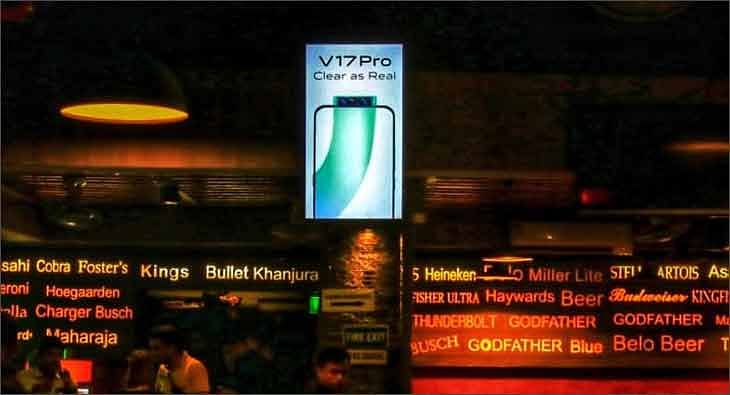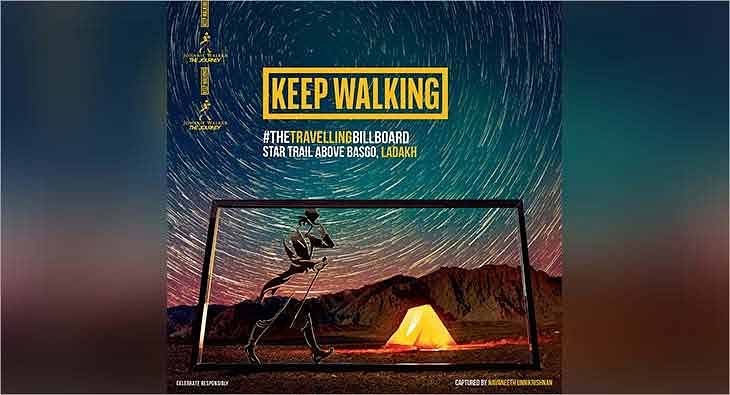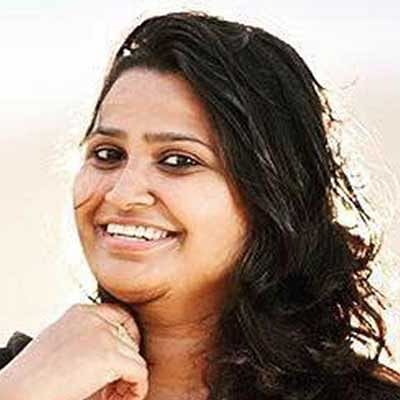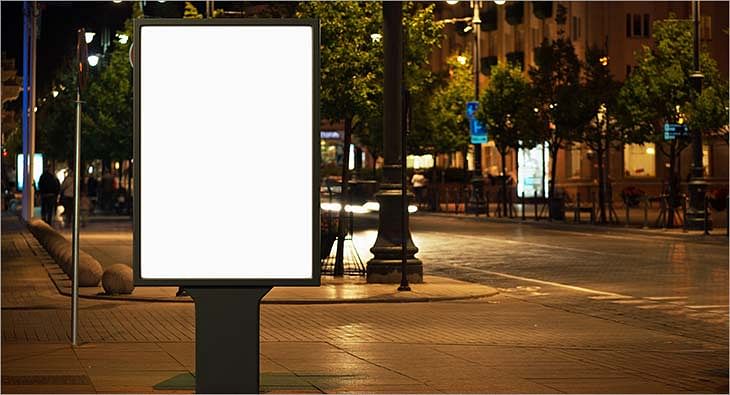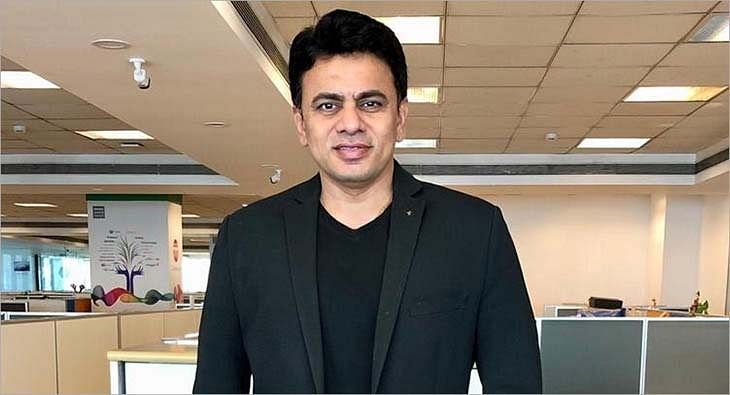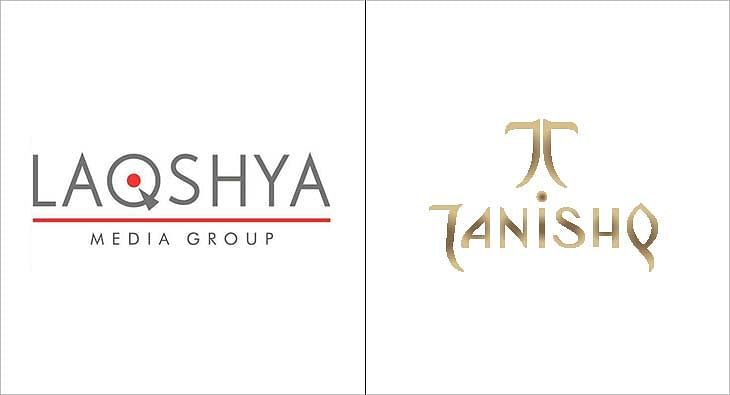OOH sector in dire need of currency
At exchange4media OOH Conference, Madison OOH’s Saumitra Bhattacharya, BlackBerry’s Amar Thomas, Posterscope’s Haresh Nayak, Milestone Brandcom’s Nabendu Bhattacharyya, and Laqshya Media Group’s Shashi Sinha talk about measures for retaining and attracting brands towards OOH

At the fifth edition of the exchange4media OOH Conference, industry leaders and stakeholders shared their opinion on ‘Innovations to drive OOH relevance & how to retain and attract brands towards OOH’.
Talking about the current scenario, Saumitra Bhattacharya, CEO, Madison OOH said, “In India OOH is like an old passenger train being pulled by steam engine and the current situation is all of a sudden there is an express train behind us honking madly asking us to move out of the way or run faster.
There are two things we can do, either we can speed up on our own or we let the passenger train push us along. OOH is currently in a dangerous situation where we can be pushed along because, what is happening here, OOH is the integrated with technology; digital, TV, print and everything and all those other mediums are far advanced in terms of their availability of proving ROI and their capabilities of telling everybody how good they are.”
He added, “Innovation basically is doing something new and that happens only once, and after that it’s not an innovation. And then you move on to another innovation which means you just can’t sit back and say I have done an innovation , you have to constantly keep on innovating. There are four things driving OOH and they are data, technology, content and media. We need to control all four things to be in control but the problem is we are controlling only one thing which is media.”
He also pointed out, “We don’t have control on data, everybody has data but there is no currency, we don’t have any control on content or technology. It has been driven by somebody else. I think we are at a point where unless we make that steam engine faster, we will become marginal.”
Amar Thomas, Head Marketing, BlackBerry India said, “As a marketer for me it’s not a conversation between digital or OOH. Both mediums have different purposes to serve as one can’t exist without the another. OOH for me as a marketer is an impact medium, in digital we talk about clicks, likes, retweets and all of that but in OOH it is 80/ 60 feet, 60/ 40 or any particular place. No digital can say that ‘I can measure your investment so put your money here’. The challenge for the industry as ooh is to fight for the share of wallet as digital is 10 percent ooh is 6 per cent; the idea we need to come up with is to answer the question - why should I pour more money? Let’s talk about growth than de-growth.”
On innovation he spoke about the ways in which you change yourselves and reach to larger audiences. Citing an example he said, “The way we changed ourselves was in form of qwerty keypad. Everything is the same, but instead of using buttons, we have shifted to finger touch.”
Haresh Nayak, Regional Director, Posterscope APAC said, “For me innovation is not a neon light on a billboard or some engagement which we do on a bus shelter. It is the smallest of change to do an activity, or drive a new idea and bring change.”
He said everyone is looking at innovation differently. Someone is looking at how to bring engagement, innovation in terms of data in a couple of markets, and although everybody has data, the data is not measurable.
Nayak stressed on the importance of talent because it’s as an industry driven by people. He said, “At Posterscope we have a trend that we don’t hire people from trade. 70 per cent of our people don’t come from trade; we are encouraging people from outside.”
Nabendu Bhattacharyya, Founder and MD, Milestone Brandcom defined the meaning of innovation in today’s world and also gave a practical example of what they have done.
Innovation should be eye- popping, never done before, something very big, but with limited money, that should put smiles on people’s faces; it should sell, and brand manager should win an award, he said.
Giving an example of innovation for one of their clients McDonald’s, he spoke about the Double Aaloo Tikki campaign where they decided to bring innovation with double taxis and double autos on the roads.
Shashi Sinha, Executive VP and Business Head, Laqshya Media Group highlighted how significant and ancient the OOH medium is. He said, today it is re-discovering itself and becoming more relevant for people. People are spending more time out of their home. When you need consolidated attention this is the medium to opt for. People are spending more time out of their home and switching between destinations. This is the best medium to share information and it gets audience attention.
He also pointed measurement is not a problem as nothing in this world is measured; attention cannot be measured.
The panel discussed how a currency can play a significant role to boost this industry. Amar Thomas added, “We don’t have to work in such a scenario where we will divide audiences in the number of billboards and square feet.”
Adding to that, Nabendu Bhattacharyya asked, “Unless we bring technology how are we going to engage the audiences?” Shashi Sinha said, “Industry needs a currency. There should be data and accuracy and we need to speak to the right media.”
Bhattacharya added, “Clients need to start deducting and create a fund put it in for currency. We are moving to direction of a currency.”
From the client’s point of view, Amar Thomas said, “Build, break and innovate. Digital has its own strength and you will continue to go from six percent to ten percent in marketing budgets. Digital will compliment you, re-invent yourself.”
Saumitro Bhattacharya concluded by saying, currently we are investing in inventory, we should invest in audience.
The panellists aired their views at exchange4media’s OOH Conference 2015 presented by Posterscope in association with Laqshya Media Group.
Read more news about (internet advertising India, internet advertising, advertising India, digital advertising India, media advertising India)
For more updates, be socially connected with us onInstagram, LinkedIn, Twitter, Facebook Youtube & Whatsapp
Laqshya Media Group introduces technology to measure OOH ad reach in India
SHARP, an AI empowered tool from Laqshya Media Group will help measure the effectiveness and media value of outdoor ad campaigns with supportive numeric data
Just when advertisers were shying away from the medium, the Out of Home (OOH) industry outdid itself in terms of creative, innovations and reach. With a fair dosage of digitizing itself, OOH is now ready with its next big disruption. Addressing the only possible drawback of the industry which is measurability, OOH is all set to put numbers to its reach.
Laqshya Media Group (LMG) has introduced the disruption in the Indian market. The Delhi-based OOH brand has launched ‘SHARP’ (Strategic Hyperlocal AI-powered Reach Planner), a first-of-its kind planning tool for measuring the effectiveness and media value of outdoor campaigns.
What is SHARP and how does it measure the reach of OOH ads?
The OOH tool uses machine learning to deliver AI-optimized metrics and recommendations. The system is fed with data received from more than 50,000 geo-tagged sites comprising of Billboards, BQS sites, mall facades, pillars and poles across 26 cities. SHARP combines diverse data points including geotagged OOH locations across formats, traffic measurement studies by global research agencies, multiple databases to map and measure the current profiles of resident and transit population and panel rating points, and various other site factors with the data on thousands of sites across multiple OOH formats.
Each site is geo-tagged and cross-linked with google-map APIs to indicate various relevant points of interest like banks, auto showrooms etc. from the site. SHARP is also coded to differentiate between multiple (stacked) billboards at the same location with indicative pricing per site.
Though new in India, OOH measurability has been a global topic of discussion and markets like Paris, South Africa, US and Australia already use AI driven tools to measure the reach of ads on the platform.
This move comes in at the right time for the Indian market. “Since the industry is facing an evident slowdown, we want to work in consolidation with the industry to help it grow. We will focus on technology as it plays an important role for any OOH firm,” said Atul Shrivastava, Group CEO, Laqshya Media Group (LMG).
Speaking about the advantages of measurability, Shrivastava said, “This is India’s first ever measuring tool, developed in-house by LMG that allows brands to target the right audiences with reach or a budget as an objective for an OOH campaign.”
“Brands are inclined towards measurement as it gives them better ROI’s. They know the engagement level and plan their investments accordingly,” he added.
LMG is best known for their iconic advertisements with clients such as Maruti, LG, Quikr, Myntra, Shopper Stop, Platinum Guuild, a Tanishq, Flipkart.
Read more news about (internet advertising India, internet advertising, advertising India, digital advertising India, media advertising India)
For more updates, be socially connected with us onInstagram, LinkedIn, Twitter, Facebook Youtube & Whatsapp
Vivo and Eyetalk Media Ventures leverage programmatic DOOH for V17 Pro campaign
The campaign has been executed across pubs and cafes with TagTalk and in premium tech and business hubs with the newly launched real-time business DOOH network – Biztalk
Vivo Smartphone rolled out an extensive two-month-long national campaign for the new V17 Pro handset with Eyetalk Media Ventures. Using the power of technology and content to connect with the digitally driven audience the programmatic campaign has been executed across pubs and cafes with TagTalk and in premium tech and business hubs with the newly launched real-time business DOOH network – Biztalk, a joint venture between Eyetalk Media Ventures and Drsti Communications.

The V17 Pro campaign reached young millennials and over 1.5 million employees daily from some of the biggest global companies like IBM, Cisco, KPMG, EY, Accenture, Amazon, Google, HCL etc with over 7.5 million optimized ad impressions delivered during peak hours paired with audience - environment centric content like location-based live photo sharing on TagTalk and live technology news on Biztalk for higher brand recall and engagement.

The DOOH campaign executed in 3 phases – #ClearAsReal photography prelaunch campaign in collaboration with National Geographic, launch and Diwali campaign is currently live across 600 displays across both TagTalk and Biztalk Networks in Delhi, Gurugram, Mumbai, Pune, Bengaluru and Hyderabad.

Speaking on the development, Prince Gaur, Senior Manager of Marketing, Vivo Smartphone said, “Consumer & Innovation are 2 core pillars of Vivo and DOOH has played a significant role to further strengthen them. We have been able to capture the right TG, who are affluent and digitally driven at right time and at right place. Through the mix of Tagtalk & Biztalk, we have been able to capture our TG at 2 most critical touchpoints, multiple times throughout the week. Programmatic planning on both the networks has helped us drive best efficiency out of this campaign.
Adding to this, Gautam Bhirani, Managing Director, Eyetalk Media Ventures said, “With over 600 live displays reaching over 1.7 million urban Indians daily at a click of a button across 2 key urban ecosystems the V17 Pro campaign is probably one of the biggest DOOH campaigns to be executed in India. Both our networks reach digitally-driven, affluent urban audience in a captive environment, the high dwell time gives us the opportunity to communicate and connect better which enabled us to build an effective storyline using our content assets on our audience engagement platforms.”
Read more news about (internet advertising India, internet advertising, advertising India, digital advertising India, media advertising India)
For more updates, be socially connected with us onInstagram, LinkedIn, Twitter, Facebook Youtube & Whatsapp
Johnnie Walker sets off on exploration and discovery with #TheTravellingBillboard
This OOH and digital media campaign will capture the live journey undertaken by a life-size billboard with the brand’s striding man logo exploring unchartered terrains and exotic locations in India
Johnnie Walker The Journey is proud to unveil #TheTravellingBillboard, a first-of-its-kind campaign that brings together India’s most influential travel photographers.
The striding man as a Johnnie Walker icon has always symbolized the idea of progress and moving forward. As a brand that has been passionate about exploring the world for nearly 200 years, Johnnie Walker’s #TheTravellingBillboard pays tribute to this exploratory spirit that challenges people to taste more out of life by pushing boundaries.
Conceptualized by brand solution partner What’s Your Problem, #TheTravellingBillboard shall travel to places which only a few people have visited, and also where no billboard has been before. All this, to inspire people to explore the world and seek out unique stories.
The billboard’s travel includes unexplored destinations from all corners of India that include the Basgo Plains, one of the best locations in the world to stargaze. The abandoned Kuldhara village, which is ripe with its own fantastic lore and even the underwater terrain of Andamans. #TheTravellingBillboard will be accompanied by some of India’s most influential travel photographers who will capture the final destination in their own style.
The final photographs will become the lead creatives across OOH at some of the most prominent outdoor sites in the country. The untold stories of these unchartered locations and the journey of photographers along with the billboard will also be captured through a digital content series.
Further, the campaign will be amplified with the help of 150 social media influencers who, through a miniature version of #TheTravellingBillboard of their own, will capture their own unique experiences and journeys. The brand will also deploy an Instagram filter for the entire country to join the campaign and capture India’s beauty in their own ways.
Speaking about this campaign, Abhishek Shahabadi, VP and Portfolio Head: Premium & Luxury brands at Diageo India said, “Exploration has been at the heart of Johnnie Walker, over its 200 years of being. The brand instigates exploration of the rich possibilities of our world to discover experiences that satisfy a thirst for life. Keep Walking is all about pushing boundaries to taste more out of life. This campaign celebrates this philosophy and is aimed at bringing to life the rich character of unchartered India through this exploration.”
“Today people love to engage with brands that are making them a part of the creative journey and so at the heart of this campaign is the desire to fuel exploration and to democratize the content creation across multimedia touchpoints and let everyone participate.”
#TheTravellingBillboard is designed to be a collaboration of explorers and photographers (everyone with a phone camera qualifies) who can tell the story of these uncharted locations through the Johnnie Walker lens in their unique styles. Hence, we not just have some of the country's most loved photographers travelling with billboard, but also have mini versions of the billboard travelling to all aspiring shutterbugs making it also a digitally travelling campaign” adds Khushboo Benani, Content and Influencer Marketing Head at Diageo India.
Speaking about the campaign, Ruchita Zambre, Group Creative Director, WYP, & Tejas Mehta, Strategy & Business Head said, “The brief from the Diageo team came in to do an OOH led campaign. After studying the international work done by the brand, we all felt that a basic OOH campaign will never do. It had to do more, create conversations, engage consumers. This thinking led us to create #TheTravellingBillboard. An OOH that roams the country in search for unique vistas. Thus, pushing the boundaries of what a billboard campaign can be like. Completely in line with the brand’s philosophy of pushing boundaries. And WYP’s philosophy of coming up with solutions that go across media and are truly integrated. A campaign of this kind required collaborating with various partners – for fabrication, media plan, digital amplification, photography, innovation etc. The campaign hasn’t been easy to execute at all. But where’s the fun in easy, right?”
The campaign will be on till December end. You can follow the journey through #TheTravellingBillboard or https://www.socialgoat.in/thetravellingbillboard
Read more news about (internet advertising India, internet advertising, advertising India, digital advertising India, media advertising India)
For more updates, be socially connected with us onInstagram, LinkedIn, Twitter, Facebook Youtube & Whatsapp
Economic slowdown hits OOH industry; spends drop 10-15%
Industry experts say that while the OOH industry has picked up pace during the festive season, spends on OOH have decreased over the past months
If you are driving on the expressways of Delhi and Mumbai, the hoardings on both sides of the road are hard to ignore. However, recently, the number of vacant outdoor sites seems to be increasing by the day. It’s an indication that the economic slowdown has had its effect on the OOH industry.
According to Indrajit Sen, an independent consultant, the spends on OOH have decreased by 10-15 per cent in the past months, and the overall occupancy has dropped by 25-30% per cent. “There are many campaigns which have been postponed or shelved. Besides, brand owners have also shortened the duration of existing campaigns", he said.
Thanks to festivities, the OOH industry has picked its pace a little. But the biggest spenders are the likes of Amazon and Flipkart’ who remain unaffected by the apparent slowdown which has hit the OOH industry.
In the past, the biggest spenders in the OOH segment have been real-estate players, automobile brands, OTT platforms, mobile handsets, airlines and broadcasters, but many of these sectors have been hit by the economic slowdown.
“We have witnessed it, but because of the festive season, it is looking a little better. Before the arrival of the festivities, things were not how it was last year. There is an evident difference, we have observed,” said Haresh Nayak, Group MD of Posterscope, South Asia, India.
"The ban on OOH signages has indeed spread like wildfire across the country. While this is still very much in action in Bengaluru, this is apparent across other cities as well. This is largely due to the fact that the government wants to regulate this medium which has been largely running on its own, and in many sections, by people having their own site/location without any legalities attached to it. This had to happen a long time ago but with the new rules and regulations coming in, the scenario is changing a lot and in many ways, I guess it is better for the industry in the coming months,” said VV Rajan, Co-founder, CMO, Urbaniq.
Explaining why there has been a shift in spending on the medium during the last quarter, Rajan said, “As per the Pitch Madison Advertising Outlook Report 2019, they have revised their forecast owing to a drop in the TV Adex during the first quarter of the year. And according to the original report that was released earlier this year during February 2019 Adex, it was forecasted to grow by 16.4% to touch ₹70,888 crores but the numbers seem to have come down to 13.4% to approximately ₹69,000 crores.”
He added, “A lot of this has to do with the macroeconomic slowdown leading to a fall in the domestic consumption. For example, we have seen that the auto industry has spent lower on this medium, unlike last year which is attributed to the fact the there has been lower demand in the last couple of months. The auto industry overall is the No.2 spender on the overall advertising pie. This will obviously have an impact on the OOH media as well. At the same time the rise of OTT has had a major role to play in this medium.”
However, according to experts, in the long term, this medium is more impactful than other mediums (TV, radio and Print) which require active participation; ambient media will continue to be effective. Other traditional media will continue to lose market share due to the changing media habits of the younger generation. “DOOH is transforming the medium so instead of more “faces” or locations, you will see fewer but more impactful options. This will be a “win” overall for advertisers,” Rajan opined.
Talking about if the industry will pick up its pace in the future, Sen said, “Outdoor will bounce back simply because of its cost efficiencies. To support an economy growth post slowdown, advertisers will have to look at outdoor because it continues to be cost-effective.”
“Yes, business is indeed affected by monies shifting to other media due to this but eventually it will come back once rules are set in place,” Rajan added.
Read more news about (internet advertising India, internet advertising, advertising India, digital advertising India, media advertising India)
For more updates, be socially connected with us onInstagram, LinkedIn, Twitter, Facebook Youtube & Whatsapp
Digital conversion in Kerala OOH industry will take time: Experts
Industry experts believe cities in Kerala have not fully adapted to Digital OOH since there is still a strong preference for traditional OOH advertising
Out-of-Home Advertising or Outdoor Advertising remains one of the prime modes of advertisement in Kerala. According to industry experts, the OOH industry in the state is has a turnover of almost Rs 350-400 crore per year. Recently the state has banned flex materials made from polyvinyl chloride (PVC) citing health and environmental issues. As per the order from the Department of Local Self Government, PVC flex should not be printed or used for government functions, private or religious events, cinema promotion or advertising.
In the wake of this, is it high time that the OOH players in the state shifted to digital billboards? Unlike other South Indian cities such as Chennai, Bangalore and Hyderabad, the cities in Kerala have not adapted to DOOH.
We spoke to industry experts to get their take on the subject.
“It is probably a demand vs supply situation. The options for regular OOH formats are much more in demand and remain sold through the year so no one complains. A lot of advertisers today still believe in the traditional mediums like static OOH, unlike digital mediums. Also, many static OOH ads are large formats and hence lends visibility to the brands much easier. Digital OOH, on the other hand, may have deeper penetration and much better measurability and ROI but still, clients today in Kerala want OOH formats which are impactful and visible,” observes Venkata Varadarajan, Co-founder, CMO, Urban IQ.
“In many ways, the Kerala OOH business scenario is no different from those seen in non-Metro markets across the country. For one, the media ownership is highly fragmented, and as a result, their businesses are not scalable, whereas in the digital OOH (DOOH) environment the ROI will kick in only if the asset ownership is at scale,” said S Kumar, Managing Director, Srishti Communications.
Kumar continued, “It is also important to note that DOOH is a not a like-for-like replacement of the traditional OOH formats. The display part is only one aspect, which of course, meets the eye of the advertisers and consumers alike. Instead, DOOH calls for investments in software solutions, IT networking, hardware investments including their AMC, among others. Media owners who have been accustomed to investing in a few traditional units like hoardings and billboards will be hard placed to garner funds for investing in the tech-driven media for the longer term.”
So what stops the OOH players from shifting to digital formats?
“The existing OOH regulatory environment in Kerala is also not a great enabler of DOOH business. True, the state government has placed a ban on the use of PVC flex for advertising and publicity purposes, while mandating that the industry should switch to green options. But, there has been no policy measure to promote the use of DOOH in any of the markets in the state. Given that the norms governing digital OOH across the country are archaic, the media owners in Kerala will not have the confidence to even invest in DOOH assets in the fear that the authorities may come down heavily on the DOOH formats for some unforeseen reason in the future,” said Kumar.
“In order to shift to digital billboards, the government should be able to provide support and confidence to OOH players in Kerala. A few years ago, neon boards which were hosted in some part of Cochi city were removed citing that the public is getting distracted by the boards while driving. The hosting of digital billboards requires huge initial investments and if the aforementioned situation arises, then it will be a problem for the players,” said Biju Babu, a veteran in the OOH industry.
Talking about the challenges Krishna Kumar of Whisper Media said, “The initial investment required for digital billboards and its maintenance is a huge issue among the OOH players. Lack of awareness and proper professional guidance and maintenance is also a concern, and in terms of ROI, this might be another challenge. But we should be optimistic, the whole scenario will improve and gather a positive momentum very soon.”
According to Kumar, DOOH is growing in the transit media space, such as at the airports, Kochi Metro network, railway stations and the like.
“That is where DOOH will gain ground increasingly, and in time, as the city authorities deem fit to bring DOOH into the scheme of city beautification, we will hopefully see DOOH replacing the traditionally large and short formats in the outdoor space, unit by unit. DOOH adoption is also contingent on the cost of hardware and software solutions coming down,” added Kumar.
Talking about the digital conversion in the state Varadarajan said, “The digital conversion will take some more time in Kerala since traditional OOH has a very strong presence to the point of becoming a habit with advertisers to use them in their campaign strategies. And while the affluence and development are still on the rise, the market is largely traditional in the way media is consumed.”
He added, “OOH growth is very limited in Kerala and the chance to transition to Digital for upcoming locations is also limited. Only when the OOH media gets more regulated will there be a change in the way digital formats will find its way into the media spaces. And that will also happen with the overall cities and towns becoming smarter with their solutions for the general public.”.
Read more news about (internet advertising India, internet advertising, advertising India, digital advertising India, media advertising India)
For more updates, be socially connected with us onInstagram, LinkedIn, Twitter, Facebook Youtube & Whatsapp
Ahmedabad, Indore, Chandigarh, Pune are emerging markets in OOH: Haresh Nayak, Posterscope
Nayak, Group MD of Posterscope, South Asia, India, talks about the different kinds of avenues brands tap into while leveraging OOH during the festive season
The industry is currently is reportedly going through a major slowdown and brands are cutting costs to stay afloat in the segment but not during festivities. Yes, here comes the festive season and happy times for brands and the media industry arrives too.
We spoke to Haresh Nayak, Group MD - Posterscope- South Asia, India to understand what are the different kinds of avenues brands tap into while resorting to OOH during festivities; the emerging markets and what kind of brands are investing heavily during this time of the year and more.
Edited excerpts:
What are the different kinds of avenues brands can tap into while leveraging OOH?
There are a lot of avenues, from different markets to different types of formats. In the coming 2-3 months, there will be a lot of activities in the OOH space but a client can also look at DOOH where a lot of engagement activity can be done along with the traditional media and digital media. At places like malls and beauty parlours, there are a lot of captive audiences present. So, within these spaces, there are many options today. We have been doing initiatives in malls and colleges. We are looking at beauty parlours as a big segment because a lot of engagement is there during the festive season.
Also, we're trying to do something where potentially a lot of talking is going to happen in a mall. We are not only looking at digital and traditional media options within the mall but also doing geofencing and connecting them with digital. For example, we did a combination of social media along with the traditional OOH or DOOH in the mall and if someone is surfing something on the net, he/she will get to see a similar notification on their handsets.
Which brands are investing more in OOH during festival season?
Automobile brands such as Maruti Suzuki, Honda, and mobile handset as a category with brands such as Oppo, One plus, Redmi etc, are active right now. All the FMCG brands and e-Commerce brands opt to invest heavily during this time of the year with their discounts/offers. Banks namely Standard Chartered and HDFC are active too with their offers of debit/credit cards.
What kind of OOH is working? Is it the celebrity hoarding or is it the traditional billboards, what is it that's working in terms of creatives?
It is a combination of everything. In a world which is so cluttered and complex, every customer is different. Ultimately we need to have a communication which is reaching one-on-one and not going to many. So, in this scenario, you cannot say that one activity will work or two activities will. It needs to be a holistic 360-degree view and a combination of everything.
What are the emerging markets in the OOH space?
Markets like Ahmedabad, Indore, Chandigarh, Pune are the new emerging markets. The reason being, we have good quality out-of-home media inventories in place and different infrastructure in place. If you look at beyond these four metro cities, I think these small cities are learning quickly and not repeating the mistakes done by the metros because the learning curve is much faster.
How are brands today investing their advertising budgets in emerging markets?
It depends a lot on their marketing; everything starts with it. There are a lot of factors including their goals, objectives, whether their product will penetrate in the market way better. Brands are available in metros because the population is larger, so the potential is more in terms of location. Brands like Mahindra and FMCG brands are also working in the rural markets, because the demand in the rural, as well as, the metro is equal.
Do different brands look for different positioning to target a specific audience base?
That’s our goal as an agency. Every agency has its own unique way of planning. We don't consider outdoor advertising companies; we push within ourselves as a location-based marketing company. The moment you chose a position, the data analytics, technology and insight which you are able to provide to your client to take the right decision is very difficult. And for us, the kind of investments we have done in various API’s and data points, we are able to make those decisions.
We are also looking at influencers who will work with us. We are also looking at the key markets and suggesting celebrities or influencers who are right for brands for hyper-local penetration and creating content. Various initiatives have been taken by brands to become more accountable and also more hyper-local.
For example, Flipkart investing their advertising budgets in emerging markets and Coolberg as an upcoming brand that does the same.
Is the OOH industry a victim of economic slowdown?
Yes, we have witnessed it, but because of the festive season, it is looking a little better. But before the arrival of the festivities, things were not how it was last year.
Read more news about (internet advertising India, internet advertising, advertising India, digital advertising India, media advertising India)
For more updates, be socially connected with us onInstagram, LinkedIn, Twitter, Facebook Youtube & Whatsapp
Laqshya launches OOH campaign for Tanishq's Virasat collection
The outdoor duties were assigned to OMI, the outdoor agency arm of Laqshya Media Group
Tanishq has launched a new OOH campaign marking one of the most anticipated festivals of the year, Diwali! For this auspicious occasion, Tanishq is launching its new festive collection- Virasat.
The OOH campaign brings alive the essence of age-old traditions, cultures and rituals which have been followed through generations. The campaign aims to take forward this tradition of purchasing jewellery which makes Diwali auspicious and special for all of us.
The high decibel campaign was devised to announce the Virasat collection stridently with a striking effect. The outdoor duties were assigned to OMI (Outdoor Media Integrated), the outdoor agency arm of Laqshya Media Group.

OMI used its in-house proprietary tool ‘SHARP’ to give the campaign high visibility & create maximum impactful exposure. The deployments were done in a way as to cover all arterial routes and important touchpoints that were imperative as per the TG’s day in the life cycle. A mix of media vehicle ensured that we attain the objective of reaching the right audience multiple times building brand salience.
The campaign was executed by strongly developing the brand’s communication in multiple cities like Agra, Ahmedabad, Allahabad, Bangalore, Baroda, Bhubaneswar, Chandigarh, Chennai, Delhi NCR, Guwahati, Hyderabad, Indore, Jaipur, Jamshedpur, Kanpur, Kolkata, Kolkata Upcountry, Lucknow, Ludhiana, Meerut, Mumbai, Nagpur, Patna, Pune, Raipur, Ranchi, Surat, Varanasi and Vijayawada.

Tanishq’s extraordinarily stunning creative looked equally mesmerizing on the OOH canvas that was handpicked by OMI to ensure that it gets the 100% OTS it demanded from the campaign. Every media unit did complete justice to build the buzz for the campaign leading to conversations and finally considerations.
Speaking further on the campaign, Naresh Bhandari, COO, OMI, Laqshya Media Group said, “Diwali and Tanishq are essentially connected to each other. Buying gold in Diwali has been a big part of our tradition across the country. This Diwali offer by Tanishq needed a much fierce noticeability at the time when all the competitors are active on OOH and vying for consumers attention. The team took it as a challenge to ensure we are not just noticed but, we impact them too. The dual approach of attaining reach and frequency using our In-House tool cut corners and we were able to deliver a successful campaign.”
Commenting on the campaign, Deepika Tewari, Associate Vice President– Marketing, Jewellery Division at Titan Company Limited said, “Each Diwali is a testament of the tradition that has been passed down from one generation to another and has been followed each year with equal vigour. This collection is a tribute to the innumerable ‘Rivaaj’ or traditions that are followed by us, especially that of buying gold and hence the name ‘Virasat’. We sincerely hope our exclusive festive offers along with our grand new Virasat Collection will add a bit of sparkle to everyone’s life. At Tanishq we wish everyone to be a part of Rivaajon wali Diwali, Tanishq waali Diwali”.
Read more news about (internet advertising India, internet advertising, advertising India, digital advertising India, media advertising India)
For more updates, be socially connected with us onInstagram, LinkedIn, Twitter, Facebook Youtube & Whatsapp




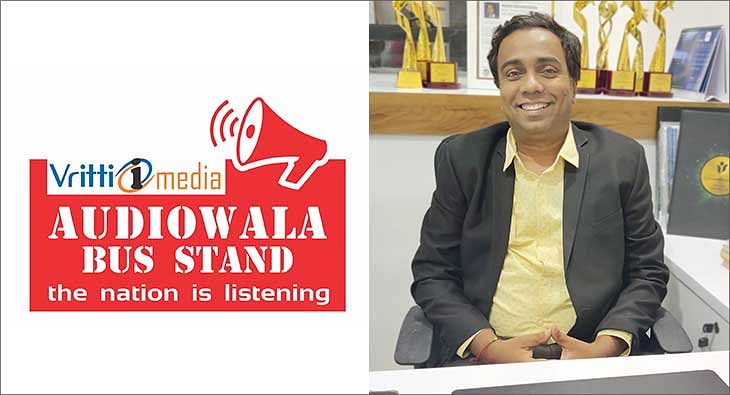

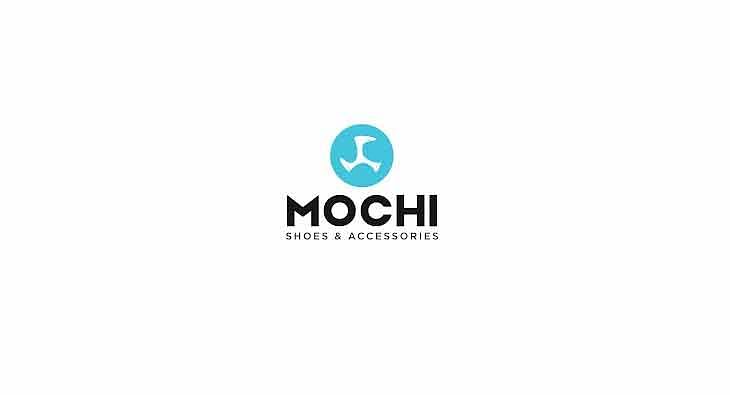






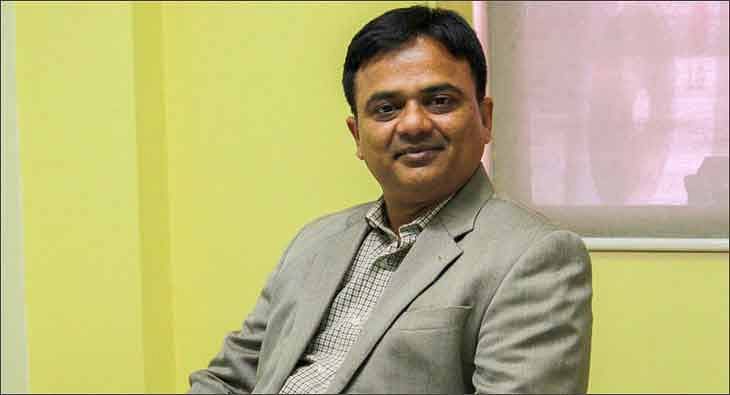
 Share
Share
